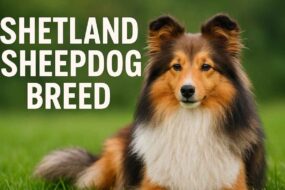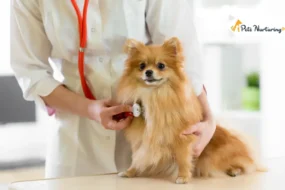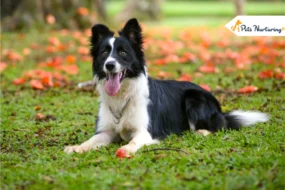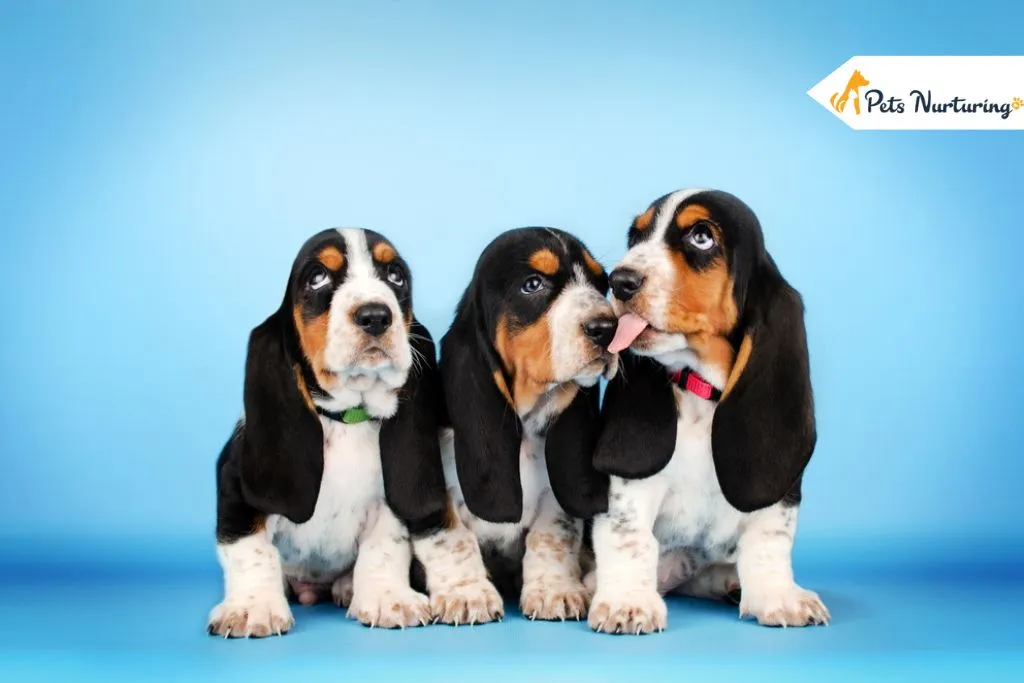
The Basset Hound is a dog with a unique appearance. You can easily recognize them from their floppy ears and jowly face.
Do you remember the famous Droopy Dog character from Tom and Jerry? That’s a white Basset Hound.
They are also the original mascot for the “Hush Puppy” shoe brand.
From all this information, it is clear that these dogs are quite popular. But if you are planning to bring one home, first do some research.
It is important to learn about the breed to make sure they are right for your home. And that’s what we are going to help you with.
In this guide, we are going to share details about the Basset Hound breed, from their history and origin to characteristics and care.
Breed Overview

Basset Hound Dog Breed
Breed Name: Basset Hound
Breed Group: Hound
Height: 12 to 15 inches
Weight: 40 to 65 pounds
Lifespan: 12 to 13 years
Coat: Short and smooth
Color: Combinations of black, white, tan, brown, red and more
Temperament: Friendly, loyal, and stubborn
Grooming Needs: Low maintenance
Hypoallergenic: No
Origin: France
Basset Hounds have 220 million smell receptors and are excellent at tracking scents.
History
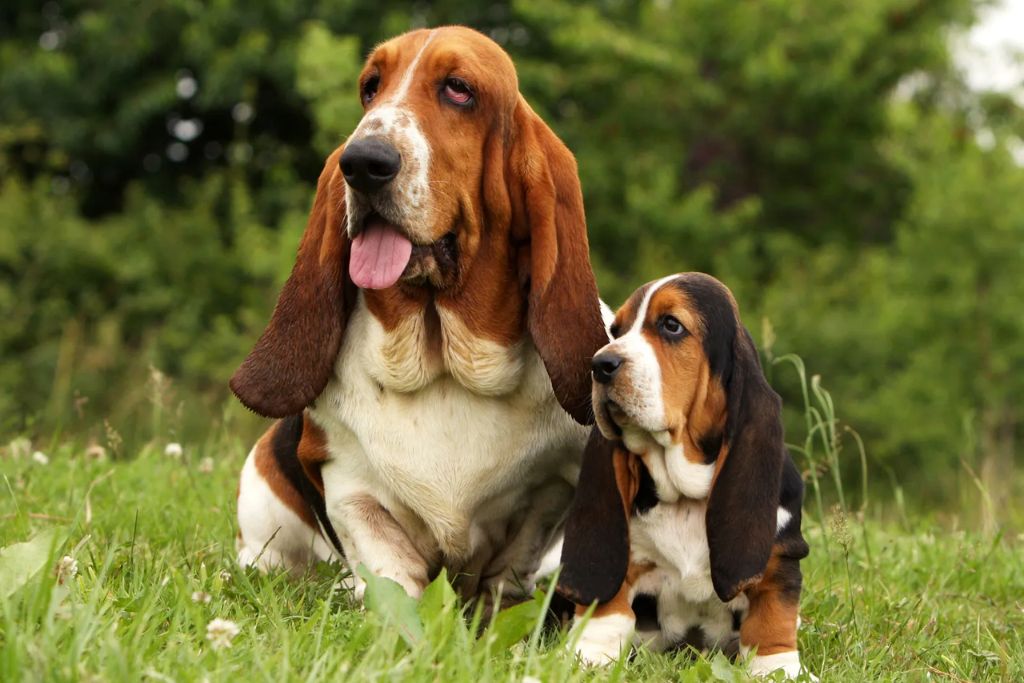
Basset Hounds were created in France and Belgium long ago by mixing different types of dogs at a monastery. It’s believed they originated from dogs belonging to St. Hubert of Belgium, dating back to the 6th century. The monks wanted a small dog with a great sense of smell that could hunt in rough areas.
Over time, they made their way to France and became known as the St. Hubert’s Hound. In France, the first mention of a “Basset” dog appeared in a hunting book in 1585. The name “Basset” means “low” in French because they have short legs. They were originally used for hunting foxes and badgers.
Basset-type hounds became popular in France during the reign of Emperor Napoleon III in the mid-19th century. They were exhibited at the Paris Salon, gaining international attention. Controlled breeding of the Basset Hound began in France in 1870, resulting in two main types:
- Chien d’Artois with straight legs
- Basset Normand with crooked legs
These were eventually bred together to create the original Basset Artésien Normand.
In England, French Basset Hounds were imported in the 1870s. They were crossed with other breeds, including Bloodhounds, to create a heavier type of Basset. The first breed standard for the Basset Hound was established in Great Britain at the end of the 19th century and has been updated over time.
The American Kennel Club recognized Basset Hounds in 1885, making them the 10th breed the AKC accepted. These dogs have been popular in the U.S. through books and movies. The Basset Hound Club of America started in 1935.
Appearance
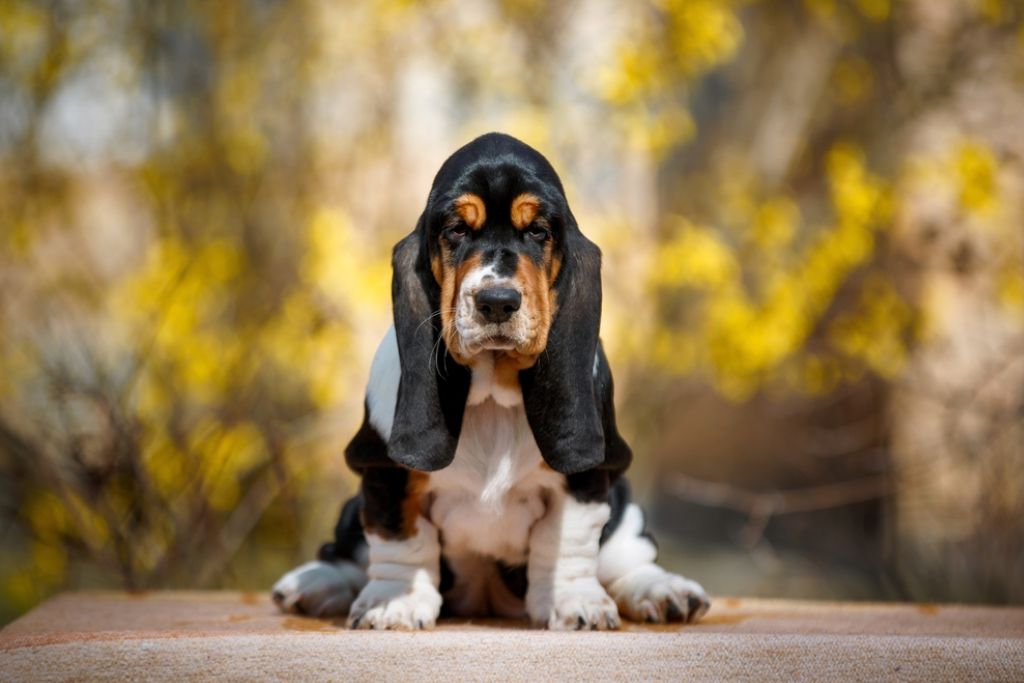
Basset Hounds are large dogs with short legs, sturdy bodies, and long backs. They have curved tails that they carry high over their backs. An adult Hound typically weighs between 40 and 65 pounds. These dogs with small legs can reach up to 15 inches in height.
Like their ancestor, Basset Hound dogs have loose skin that hangs from their faces, giving them a sad expression. Many people find this feature charming. The loose skin around their necks is called the dewlap. They have velvety floppy ears and large paws, which makes them one of the cutest dog breeds in the world.
| Characteristic | Male | Female |
| Height | 13 to 15 inches | 12 to 15 inches |
| Weight | 55 to 65 pounds | 40 to 60 pounds |
Coat and Color
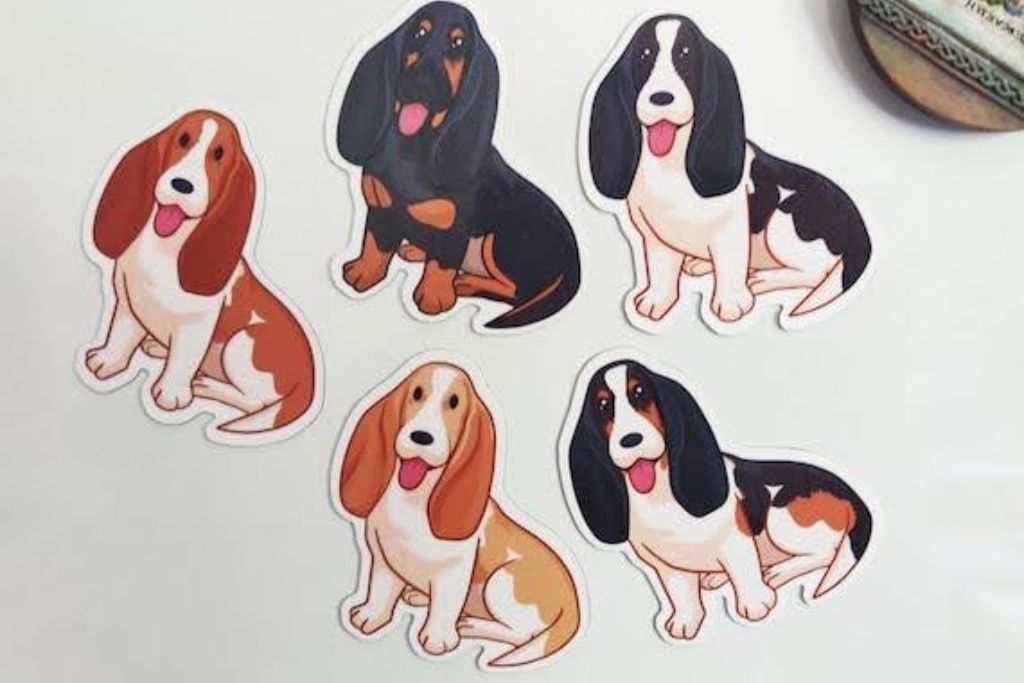
Basset Hounds have a short, smooth coat that keeps them clean and dry and also shields them from different weather conditions. Their loose and stretchy skin gives them a cute, droopy appearance.
The Basset Hound Club of America recognizes five main color combinations:
- Tricolor (black, tan, and white)
- Black and white
- Red and white
- Brown and white
- Lemon and white
Blue Hounds (gray) might appear, but this color is not preferred because it’s linked to potential health issues caused by a recessive gene.
Basset Hound Characteristics and Temperament
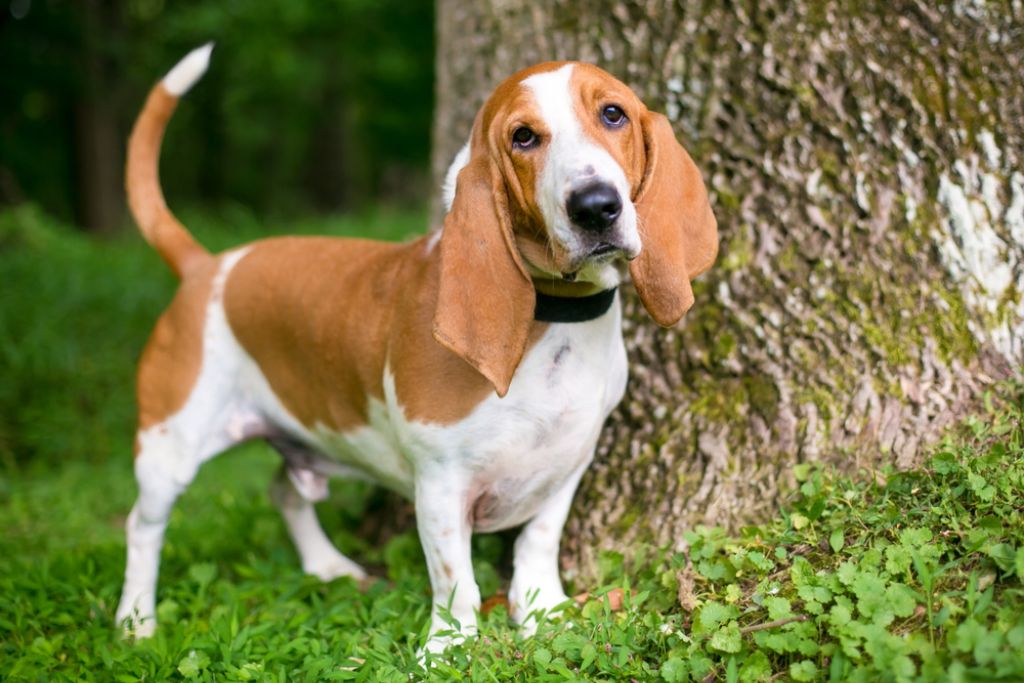
Basset Hound dogs are known for their strong sense of smell and their deep devotion to their families. Even though they are smart, sometimes they fall under the category of the dog breed as they run after each new smell. They’re affectionate and playful, making them great companions for people of all ages.
These dogs are also known for their friendly and loyal nature. They were bred to work in packs, so they got along well with other pets, including dogs and cats. They love to play if they’ve been properly introduced to other dogs.
They’re gentle and patient, making them great companions for families with kids. However, don’t expect them to be watchdogs—they’re too friendly to be suspicious of anyone. They’re famous for lounging on the couch, so they’ll happily relax indoors after some outdoor playtime.
While Basset Hound puppies are smart, they can sometimes be a bit stubborn. With love and patience, though, they can learn to be well-behaved members of the family.
To sum up Basset Hound characteristics and behavior,
- They are very affectionate
- These dogs are great with kids
- They are friendly and can live with other pets
- Bassets need a medium amount of exercise
- They are playful and low-energy dogs
- These dogs are not easy to train
- They are very intelligent
- Bassets have a high tendency to bark
- They shed on a moderate level
Marilyn Monroe was a proud owner of a Basset Hound named Hugo.
Health and Nutrition
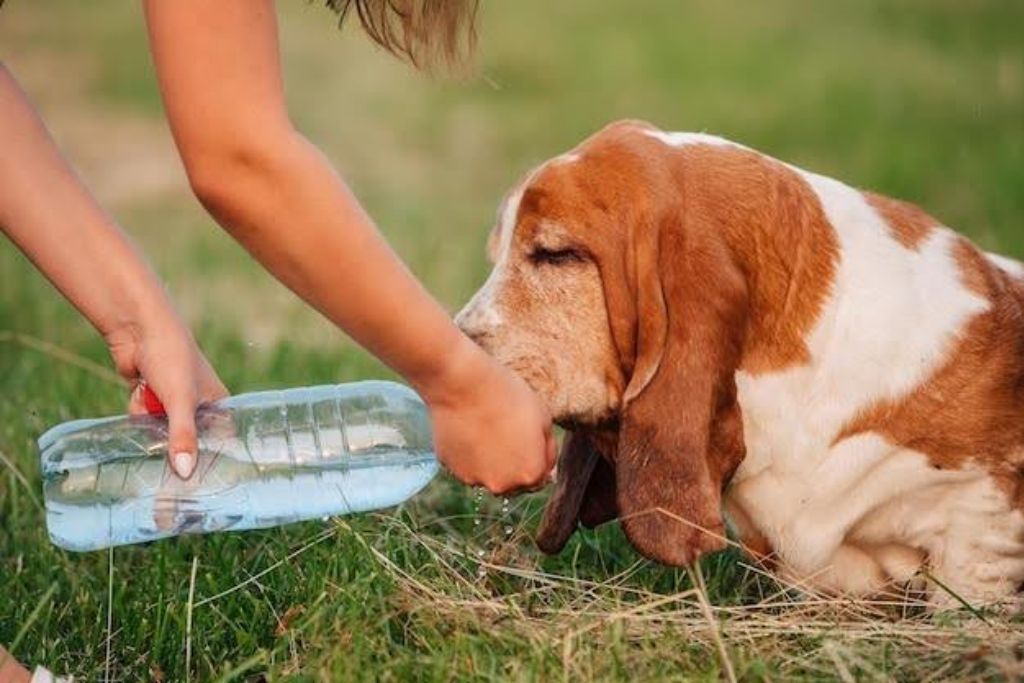
What to Feed
To feed your Basset Hound, choose a high-quality large-breed dog food that’s nutritionally complete. Weight management formulas can help prevent obesity. Avoid giving table scraps or human food as they’re unnecessary and can add extra calories.
Feeding Schedule
Feed your Basset Hound puppy 2 to 3 times a day to prevent bloating. If your dog eats too quickly, use a slow-feeding bowl to help regulate their eating pace.
Portion Control
Follow the recommended feeding amount on the food packaging or as advised by your vet. Use a measuring cup to ensure accuracy. Typically, 2 cups of large-breed kibble per day is suitable, but adjust as needed based on your dog’s weight.
Nutritional Advice
Basset Hounds puppies are prone to joint issues due to their short legs. Consider adding a joint supplement with glucosamine and chondroitin to their diet to support mobility.
Many Bassets benefit from omega-6 and omega-3 fatty acids to manage skin and ear inflammation. Look for veterinary products or consider adding fish oil to their diet for the right balance of fatty acids.
Common Health Problems
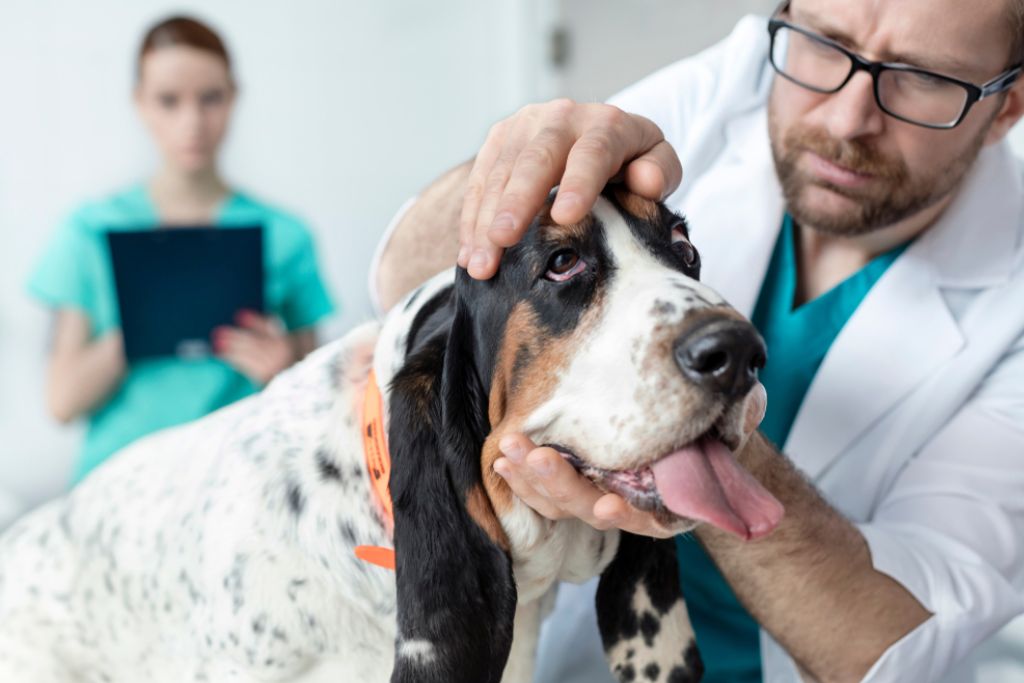
Here are some common health issues seen in Basset Hounds:
Hip and Elbow Dysplasia
Basset Hound dogs have short legs with unusual shapes, making them more susceptible to hip and elbow dysplasia. Hip dysplasia occurs when the hip joint develops abnormally, leading to instability and a loose fit between the ball and socket.
Elbow dysplasia involves irregular growth plate closure in the elbow joint, resulting in misshapen elbows with bone spurs, causing pain during movement.
Skin and Ear Problems
Bassets are prone to skin and ear troubles due to their droopy ears and folds of skin, which can trap moisture and debris. They may have allergies to food or environmental factors, leading to inflammation and infections.
Carpal Valgus
Carpal valgus is when the wrist bends sideways instead of staying straight. This puts extra pressure on the ligaments and muscles around the wrist joint. It can weaken the joint and become very painful for the dog as they get older.
Patellar Luxation
Patellar luxation is when the kneecap shifts out of place from side to side. This instability can cause discomfort and pain in the knee joint.
Glaucoma
Glaucoma is a painful eye problem where pressure builds up inside the eye. It needs immediate attention from a vet.
Behavior and Training

In terms of behavior, Basset Hound puppies are generally calm and adaptable. They may bark to protect their territory but are usually friendly with strangers.
Due to their food-driven nature, your Basset Hound puppy may try to eat anything that smells tasty, even non-food items. It’s important to keep potentially harmful objects out of their reach.
When it comes to training, Bassets can be a bit stubborn. It’s best to start basic obedience training early, ideally when they’re around eight weeks old. Consistent reinforcement throughout the day is important.
Using treats and positive reinforcement during training sessions works well, but avoid punishment as it can make them resistant. Use high-value treats like fish jerky or turkey hot dogs to make training more effective.
All Basset Hounds have a type of dwarfism called achondroplasia.
Exercise Needs
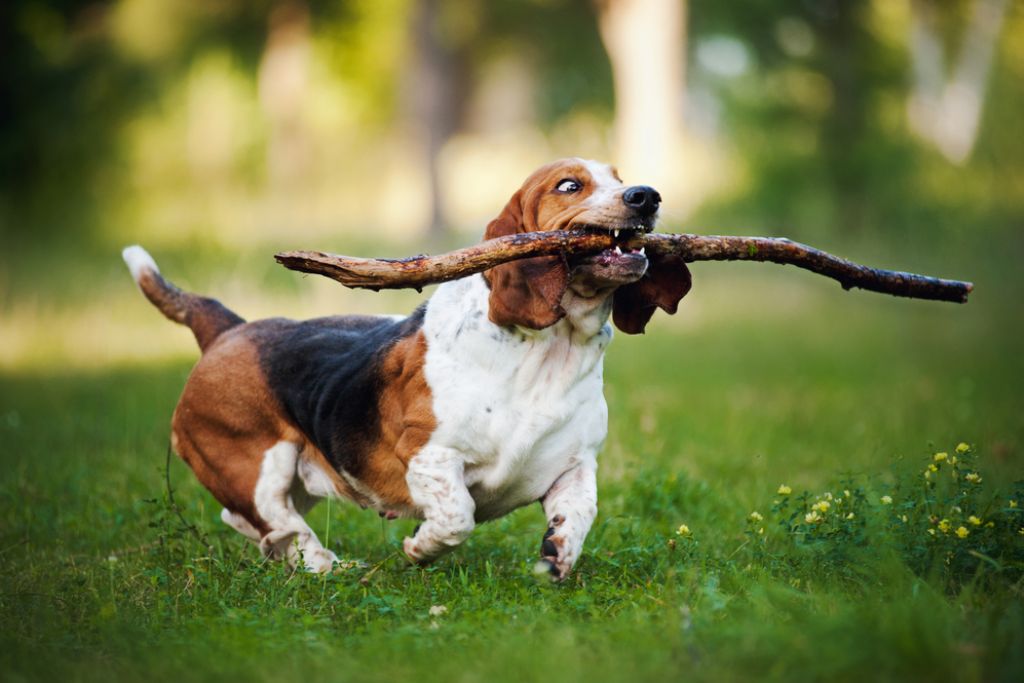
Even though Basset Hounds aren’t the most athletic dogs, they still need regular exercise. Aim for about 30 minutes to an hour of moderate activity each day. Bassets have good endurance, so activities like long walks are perfect for keeping them fit.
They also love playing, so spending time in the backyard with toys and family is enjoyable for them. Regular exercise not only maintains their health but also helps prevent weight gain, which Bassets are prone to due to their love for food.
Grooming Needs
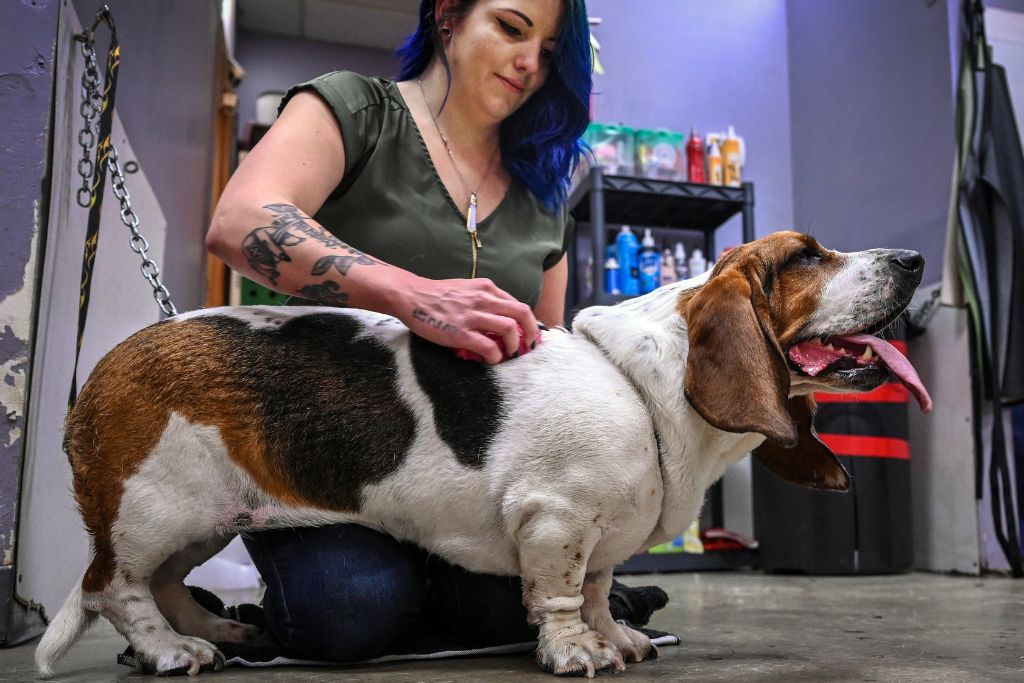
Bassets have short and smooth coats, so professional grooming is not required. You can easily groom them at home.
Skin Care
For skincare, it’s essential to bathe Bassets frequently with hypoallergenic or medicated antifungal shampoo to manage yeast overgrowth and prevent infections. Make sure to thoroughly dry their skin, especially in their heavy skin folds, to prevent irritation from moisture.
Coat Care
Their coats are easy to maintain with daily brushing and bathing one or two times a week.
Teeth Care
For dental care, brush your Basset Hound’s teeth regularly and provide dental chews to prevent plaque buildup.
Eye Care
Due to their droopy eyelids, Bassets may have increased eye discharge, which should be cleaned daily with a warm, wet washcloth. If you notice redness, yellow or green discharge, or signs of discomfort, consult your vet immediately.
Nail Care
Trim their nails monthly to avoid overgrowth, which can lead to discomfort and difficulty walking.
Ear Care
Regular ear cleaning is crucial for Basset Hounds, as they are prone to ear infections. Clean and flush their ears with a medicated wash once or twice a week.
Are Basset Hounds Hypoallergenic?
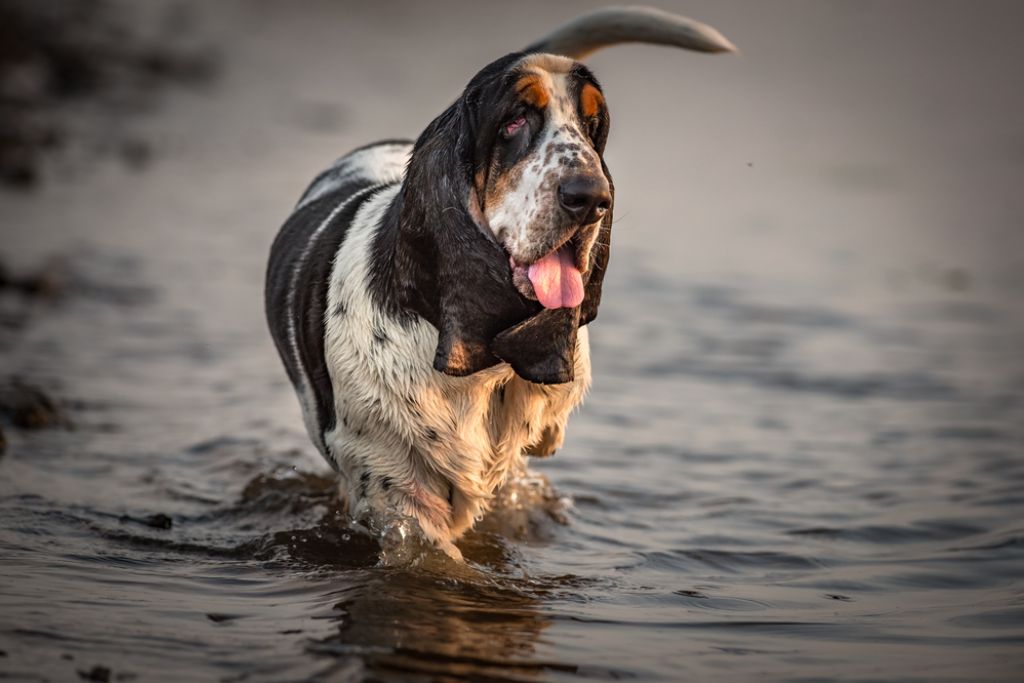
Bassets are not hypoallergenic. They shed moderately throughout the year, leaving dander that can trigger allergies. While they won’t cover your furniture in hair, their shedding may still cause issues for allergy sufferers.
Price
Basset Hound puppies for sale can cost anywhere between $800 and $1,500 on average from a trustworthy breeder in the U.S. However, top-quality Basset Hound puppies for sale can be priced at $3,000 or more. Prices vary based on factors like gender, age, lineage, and breeder location.
Basset hounds were bred to hunt small animals together in groups.
Basset Hound Lifespan
Bassets typically live for about eight to 12 to 13 years on average. Yet, with adequate care, some can reach up to 17 years. Various factors like genetic health issues, diet, exercise, and healthcare can influence Basset Hound’s lifespan.
FAQs
You can easily find Basset Hound for sale through reputable breeders or adoption agencies.
Yes, Bassets are very loyal to their families.
Basset Hounds are special due to their unique appearance and exceptional tracking abilities.
Conclusion
And that’s a wrap! That’s all you need to know about a Basset Hound. These adorable droopy-faced dogs are good for families as well as singles. They are loving and can even adjust with other pets. However, remember that they can be a bit stubborn when it comes to training. So, it is best to start early and use positive reinforcement.
However, these dogs are susceptible to joint problems, so make sure you give them supplements. We hope this guide helps you decide whether a Basset is right for your home.
Read More:








